Renault Scala vs Ford Fiesta vs Skoda Rapid vs Hyundai Verna vs Honda City
Which of these petrol automatic saloons is your pedal foot going to prefer?
Published On Apr 30, 2013 03:32:00 PM
34,399 Views
Follow us on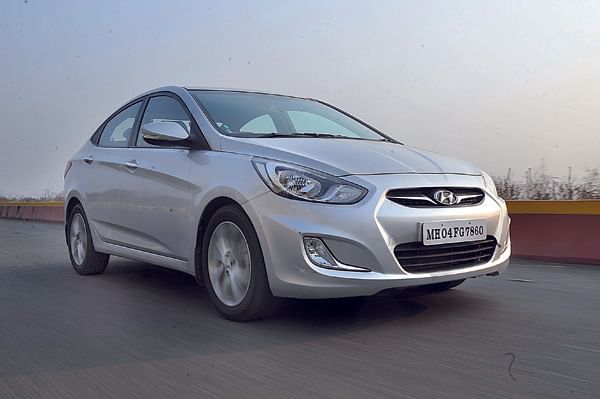
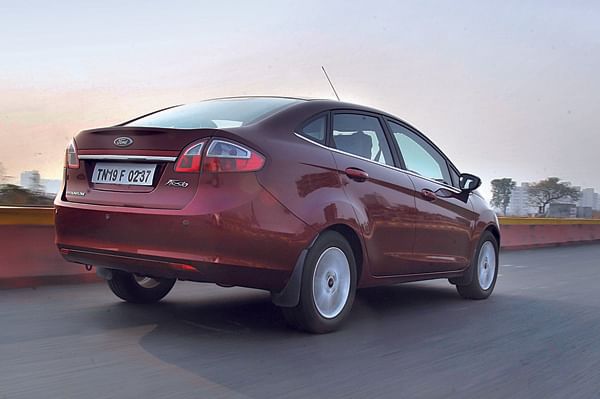
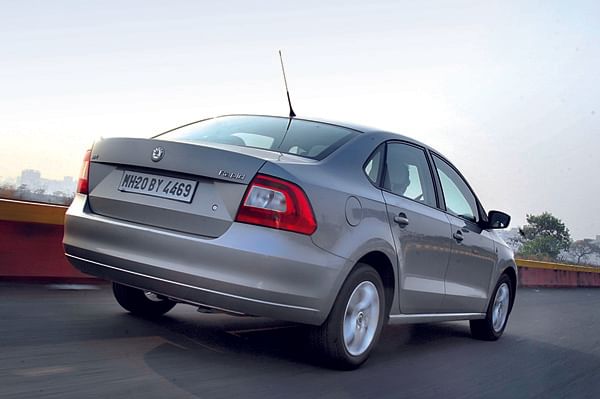
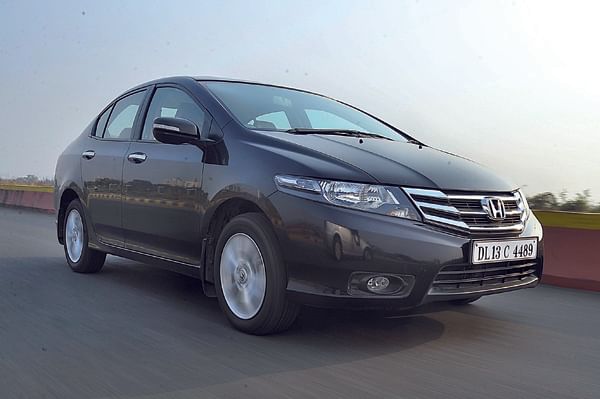
![]() By Staff Writer
By Staff Writer
If you live in one of the country’s bustling metros and drive yourself around on a daily basis, you have no doubt found yourself stuck in seemingly endless bumper to bumper traffic. And chances are, you have wished, at some stage or the other, for a car with an automatic transmission so that you can make your commute less stressful.
But the good news is that automatic gearboxes are no longer exclusive to premium cars. Mid-size saloons like the ones here all have an automatic gearbox as an option. The Honda City started the trend, offering an automatic option in its previous two generations. Its latest avatar is represented here in V (AT) Sunroof trim at a pricey Rs 10.59 lakh.The Hyundai Verna holds the distinction of being the only car in the segment to offer a diesel engine with an auto ’box, but since we’re comparing apples to apples, it’s the 1.6 petrol SX (O) with the four-speed auto, at Rs 10.05 lakh, that we have with us. At Rs 9.38 lakh for this top-end Elegance Plus variant, the Skoda Rapid is the most affordable car here, and what you pay for is solid European engineering and technology. But then, if it’s high-tech you’re after, there’s the Ford Fiesta – which brings with it the segment’s first double-clutch automatic. And to dispel the conception that the Fiesta is expensive, at Rs 9.96 lakh for this top Titanium+ variant, it is competitively priced. And finally, the newest entrant, the Renault Scala X-Tronic – a car that does things a little differently. It looks unconventional and it uses a CVT, which most other carmakers have long since abandoned, but it promises great practicality and good fuel economy for as little as Rs 9.89 lakh, even for this top-of-the-line RxZ.
But which among these five is the best bet?
Design & engineering
Walk up to the Scala and you know, just by looking at it, that it’s a really practical car. There’s that biggish-looking boot, the large glass area and the smart nose. However, it doesn’t have the sharp styling of the others here. The Honda City, for instance, looks so proportionate and clean, it’s hard not to like the way it looks, even though it’s the oldest of this bunch. Even the Skoda Rapid follows this offend no one, please everyone thinking in its fuss-free lines. The same can’t be said of the Fiesta though; it’s a love it or hate it kind of design, with its very attractive nose and a rather heavy looking boot. What none of us disagreed on, however, was that the Verna is the nicest looking.
With its sharp lines, neat detailing and this SX (O) trim’s low-profile tyres, it is easily the one that draws the most attention. Under the skin, we have a fairly simple formula. All these cars use transverse-engine platforms, and send power to their front wheels via automatic gearboxes. An important point to note here is that the Scala is the lightest of the lot, weighing in at just 1040kg. This is significant, because the light weight will help with fuel efficiency and, given that automatics are generally thirstier than their manual-gearboxed counterparts, the lighter, the better.
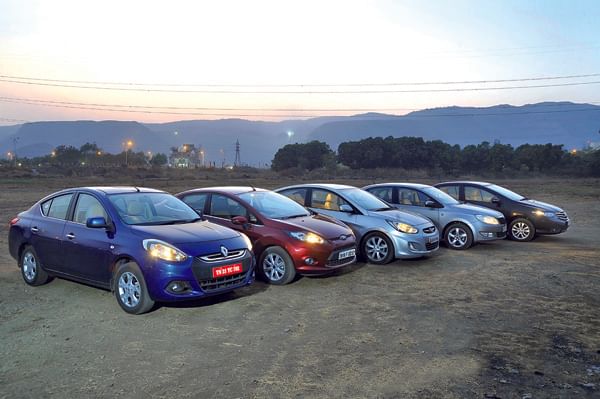
Interiors
Considering you’ve bought an automatic because you like the convenience, it’s likely that you won’t spend much time in the back seat. So it’s the Verna’s dashboard that’s the most gadget laden, the Honda City’s that’s the classiest and the Fiesta’s that’s the sportiest. The Rapid’s dash is minimalistic but it feels the best built, and it’s the Scala’s that gives the best sensation of space. To elaborate, the Verna gets kit that none of the others offer – there’s a reversing camera and keyless entry and go, for instance (the Scala gets the latter as well).But that isn’t to say the others are under-specced. All offer power windows, electric mirrors and an audio system.
However, only the Verna and the Fiesta offer Bluetooth audio and phone connectivity, the Ford getting a neat voice control system as well. The City may not have climate control like the others do, but you can choose either a sunroof like we have on this car, or touchscreen DVD navigation system on the V (AVN) variant. None of the others get these features.As for the front seats, you know the minute you slide into the Fiesta’s snug buckets that the intent here is sporty.
The driving position is just right, the sculpted wheel feels good to hold and the pedals are exactly where you expect them to be.However, people of a larger build may find the seats a bit too tight and most will also find the Fiesta’s dashboard a bit too plasticky.You will have no such issues in the Honda, because it has just the right mix of good design and quality materials. The instruments are clear, the controls work with a nice, tactile feel and you even sit a bit higher than in the other cars. The Rapid’s dash is actually better put together, but it is a bit too plain and there’s not much flair to the design. You sit lower than in the City, but the seats are as comfortable, if not comfier. The Renault’s front seats simply don’t have the thigh support that the others do, and so aren’t as comfortable. And although there’s acres of legroom and width at the rear, there’s a noticeable lack of thigh support here too, and it does get uncomfortable over longer journeys.
The Honda City has the most comfortable rear seat with perfect cushioning, adequate legroom and headroom and even a raised footrest under the front seat (courtesy the mid-mounted fuel tank). The Rapid’s rear seat is quite well designed too and you won’t have much cause for complaint. It even has a clever lever that allows the rear-seat passengers to move the front passenger seat forward to improve legroom. As for the Verna, it loses out on comfort because the rear seat is the lowest of this group. The front seats aren’t the most supportive either and you don’t feel particular snug in them.
The Fiesta may have the best front seats, but move to the rear and it’s the other extreme; the back seats aren’t particular spacious and the rising window line that eats into the glass area doesn’t give the same sense of spaciousness as the others. It’s no surprise that the Scala, with its protruding rump, has a large, 490-litre boot. What is surprising is that the City trumps it with 506 litres; a testament to Honda’s packaging skills. Since the fuel tank has been moved forward, the boot is deeper than usual. The Verna and Rapid have similarly sized boots, at 465 and 460 litres respectively, but the Hyundai’s narrow boot opening makes it feel smaller. The Fiesta also suffers from a narrow boot aperture, and at 430 litres, it has the smallest luggage capacity.
Engine, gearbox & performance
The Fiesta has the best automatic gearbox of the bunch. The six-speed ‘Powershift’ dual-clutch unit manages to extract maximum performance from the engine’s relatively low power output. It’s at its best in traffic and you always find yourself in the right gear at the right time. Unlike a typical dual-clutch system, there’s no delay in the throttle response and this gearbox responds smartly to throttle inputs with quick shifts. However, as soon as you hit an open road, the lack of grunt from the Fiesta’s 1.5-litre petrol motor is quite evident. The mid-range is quite flat and it runs out of steam quite quickly at high revs.
The Verna and the City, with their higher power outputs, have an edge here and feel distinctly quicker. The City’s conventional torque-converter transmission feels a bit lethargic at low speeds and power delivery can be abrupt at times. This makes it hard to drive smoothly in stop-start traffic. However, when you up the pace, the power delivery becomes more seamless and the five-speed auto changes ratios quickly. The 1.5-litre, 116bhp i-VTEC motor feels really strong and free revving too (visits to the redline are also greeted by a nice snarl). This makes the Honda a good long-distance cruiser and the tall gearing means it feels relaxed even at high speeds.
The Verna automatic has only a four-speed automatic gearbox, but it makes up by having the most power at its disposal. Throttle responses are decent and the car requires little effort to get going. On half throttle, the Hyundai feels effortless, moving forward with a lot of gusto and enthusiasm, and the engine is the most refined too.
The Scala is the only car in this group to use a CVT gearbox. Despite its engine making the least power, the car feels quite lively and proved to be one of the quickest cars in this test. Its performance is also helped by that extremely low kerb weight. The Renault’s engine is quite responsive and the gearbox feels really well suited to urban stop-start driving. The X-tronic CVT featured on this car comes with a steel belt for greater durability and less of a rubberband effect. The Scala will happily amble along at city speeds, the gearbox keeping the motor at a comfortable engine speed. There’s more performance on tap if you use more throttle, but this is accompanied by an increase in engine noise. However, it is useful when you need to overtake, the increase in pace somewhat linear with the rise in revs. Using maximum throttle makes the engine really noisy and strained though.
If linear power delivery is what you are looking for, then it’s the Skoda Rapid that does it best. The Rapid delivers power smoothly and the shifts from the six-speed auto ’box are seamless. But the gearbox is quite slow to respond and the engine’s relative lack of torque in the mid-range hampers its performance. Since the 1.6-litre engine’s power is concentrated mainly at the top of its powerband, you have to work it hard to extract performance. The motor gets noisy at high revs too. It’s fine in urban traffic, where you are going to be ambling along, but when you want a quick turn of pace, the Skoda doesn’t offer it as effortlessly as the others.
Ride & handling
Two minutes in the Fiesta and you will know how accomplished its chassis engineers are. Sure, the suspension feels a touch stiff at low speeds, but that disappears as soon as you up the pace slightly – we’re still talking about city speeds, mind you. The car feels tough in the way it handles our roads and there’s little that can ruffle a Fiesta.
The Rapid’s suspension is a touch softer but it tackles poor roads in a similar manner, and both these cars feel supremely planted at speed.The City is up next and, though it isn’t as resolved as the Fiesta or the Rapid, it does a pretty good job of absorbing lumps and bumps. It must be said that the City’s suspension is noisier and the cabin isn’t as well insulated from road noise as the other two.It’s like that with the Scala as well. The ride isn’t bad, but there’s plenty of suspension noise, and when you hit a coarse patch, you get a hollow, humming noise from the suspension as well.The Verna has the least sorted ride. It’s too soft, so while it’s great at low speeds, for anything higher than that, there’s too much pitching, wallow and general unruliness.Its handling is also quite poor – the overly light steering and the unresolved suspension make for a car that gets unsettled easily at speed and one that’s not very confidence inspiring.
The Fiesta and the Rapid, on the other hand, make for excellent fun behind the wheel, with their accurate, well-weighted steering and excellent body control. The City isn’t too bad either, and the lighter but still accurate steering and decent grip make for more fun than you would expect. The Scala drives like the practical car it is, which is to say it isn’t particularly exciting.Driving in town, the Honda’s high seats and light steering make it the easiest to pilot. In the Fiesta, Verna and Rapid, you sit lower, so new drivers might find driving them a bit more challenging in tight spots.
Fuel economy
The Scala, thanks to its light kerb weight and CVT gearbox, is the most efficient car here. It returned 10.7kpl in the city and 16kpl on the highway. The Ford Fiesta and Honda City are quite closely matched, with overall figures of 12.75kpl and 12.5kpl respectively. The Verna, whose gearbox has only four gear ratios to play with, is not that efficient and gave us figures of 8.5kpl and 14.1kpl, city and highway. The Rapid is the least efficient of the lot, thanks to its not so modern engine. Its mediocre performance also means you have to work the engine harder to extract performance, hurting the mileage. It returned 8.2kpl in the city and 14.5kpl on the highway.
Detailed Specifications

Copyright (c) Autocar India. All rights reserved.


Comments
Member Login
Personal Details
No comments yet. Be the first to comment.